I might be able to get microscope pics.
- Formiculture.com
- Forums
- Gallery
- Members
- Member Map
- Chat
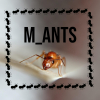
I might be able to get microscope pics.
Veromessor pergandei
Veromessor andrei
Crematogaster sp.
Pogonomyrmex cf cali and rugosus
Various Pheidole
C. yogi
Since it seems as if you may have access to a microscope I would very strongly suggest that you get a hold of a copy of the recent revision of the Camponotus festinatus group and learn a bit of ant taxonomy. Even without a scope there is a good bit of useful information in it that would be helpful.
Edited by gcsnelling, August 1 2020 - 5:29 AM.
https://pdfs.semanti...2819f8693c0.pdf
Above is a key used to identify the differences between festinatus, absquatulator, and fragilis. It points out that "Separation of C. festinatus and C. fragilis is no easy matter as the two are distressingly similar in virtually every feature." However, C. festinatus are definitely larger than both fragilis and absquatulator. You can determine whether it's fragilis or absquatulator by getting closeup or perhaps microscope pictures of the area in-between the antennal scapes.
Website: https://sites.google...home?authuser=0
Instagram: https://www.instagra.../bay.area.ants/
Youtube Channel: https://www.youtube....5Mh2eBAviuO2uw?
It has an egg!
Veromessor pergandei
Veromessor andrei
Crematogaster sp.
Pogonomyrmex cf cali and rugosus
Various Pheidole
C. yogi
In terms of distribution I was going off of this reference from AntWiki:
Westernmost records of C. festinatus are from central Arizona: Maricopa Co. (Mazatzal Mts.), Pinal Co. (Queen Creek Canyon) and Yavapai Co. (Lynx Lake).
Assuming this description (2006) still holds true I think it is either C. fragilis or C. absquatulator. The former is more often collected in SoCal so that would be my guess but you would have to get up close pictures of the head, clear enough to count hairs to get a solid ID.
I read a lot about these a few years ago, and I can't remember if C. fragilis was more common or not, but it would certainly seem so since that always seems to be the assumed ID. From what I remember, the only way to tell the different between C. fragilis and C. absquatulator was to examine their hairs under a microscope.
Would a male work? Don't want to kill a queen to get an id.
Edited by M_Ants, August 5 2020 - 8:23 PM.
Veromessor pergandei
Veromessor andrei
Crematogaster sp.
Pogonomyrmex cf cali and rugosus
Various Pheidole
C. yogi
Got even more eggs. One queens gaster got fatter and it looks even more like a fraggle.
Veromessor pergandei
Veromessor andrei
Crematogaster sp.
Pogonomyrmex cf cali and rugosus
Various Pheidole
C. yogi
Would a male work? Don't want to kill a queen to get an id.
Not likely
Here are pics of a worker. Can't say for sure this actually is the same species as the queen but I'm pretty sure. I even caught another queen right after catching the worker.
Let me know if these are good enough for an Id.
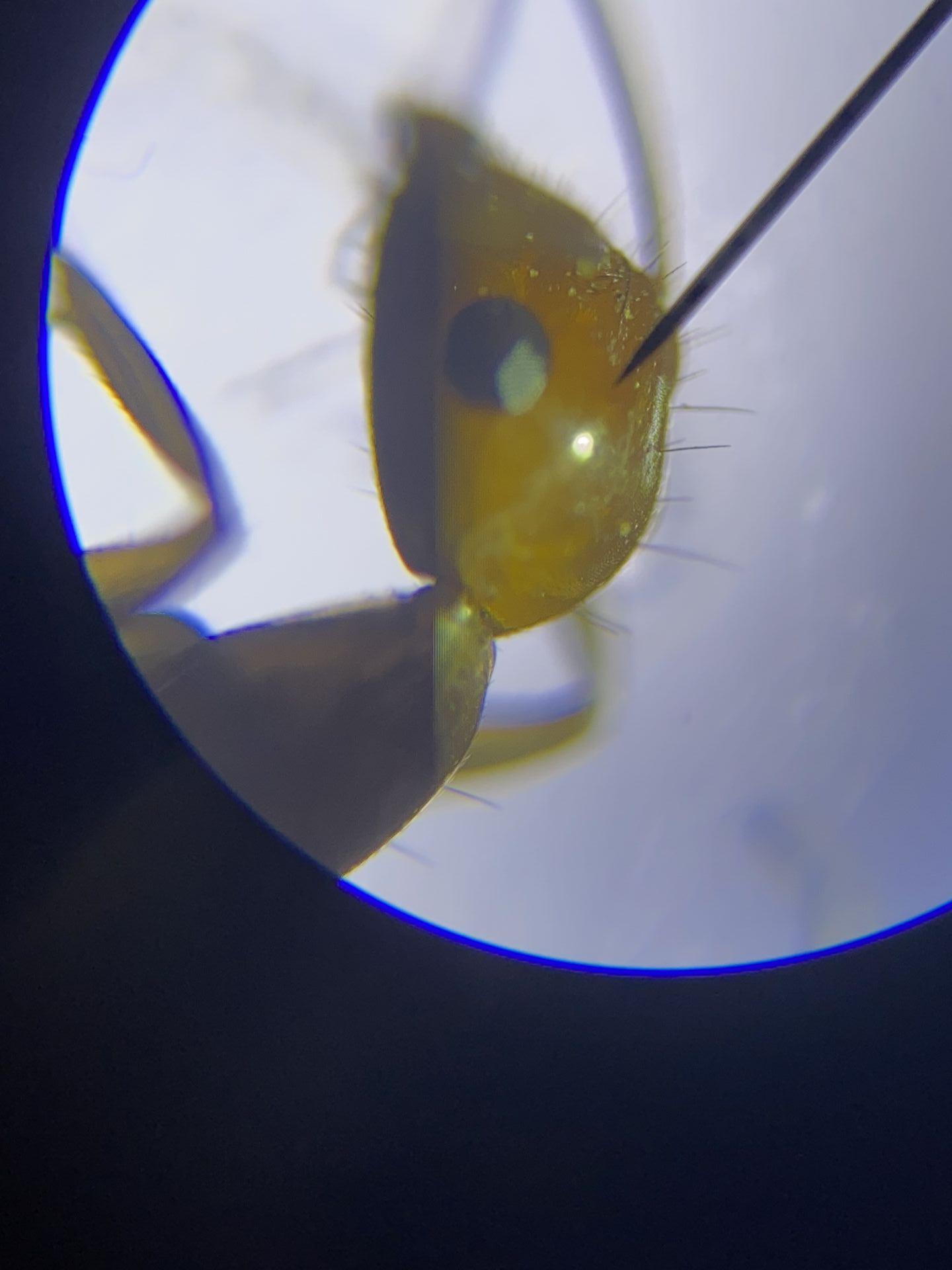
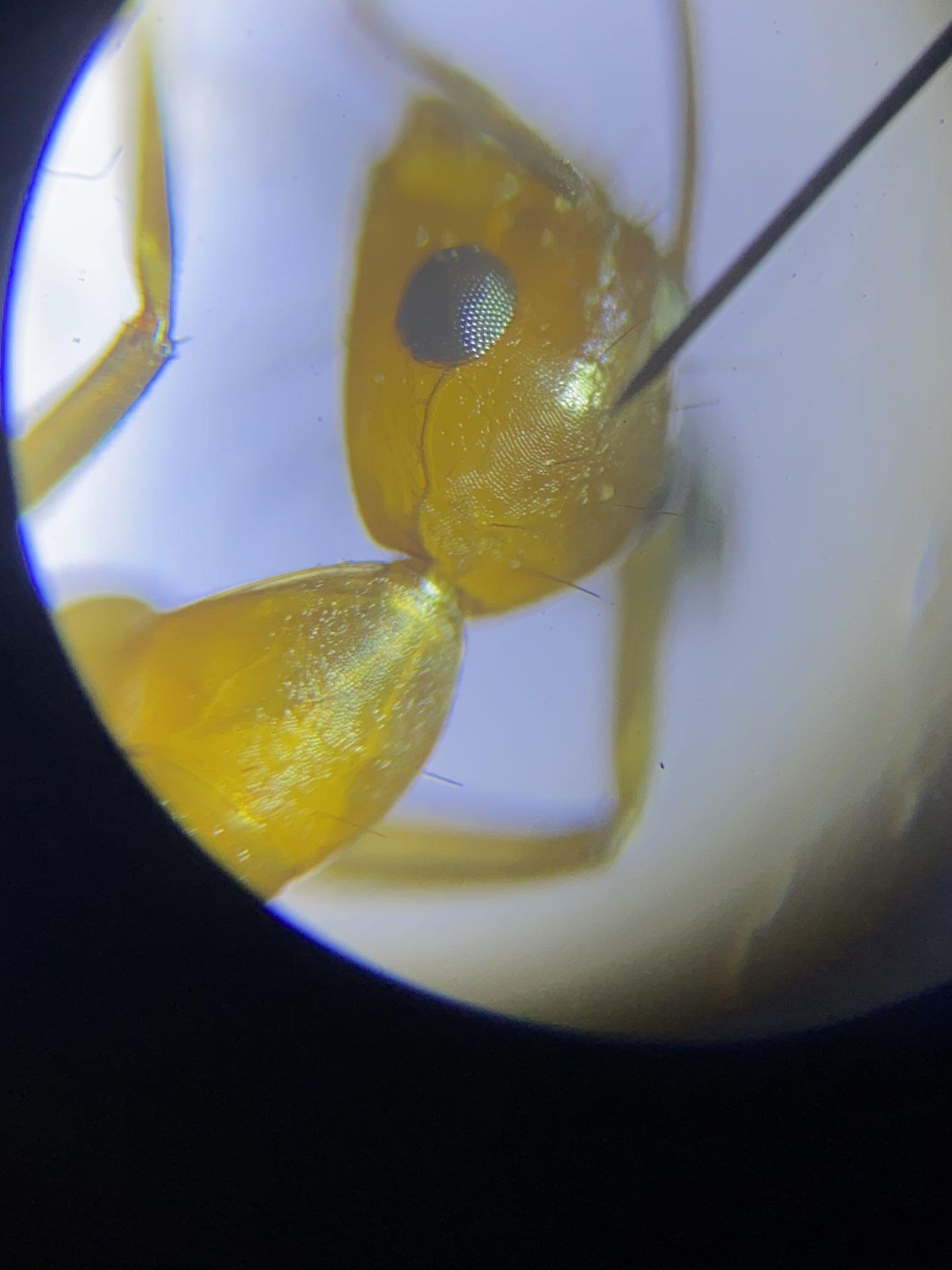
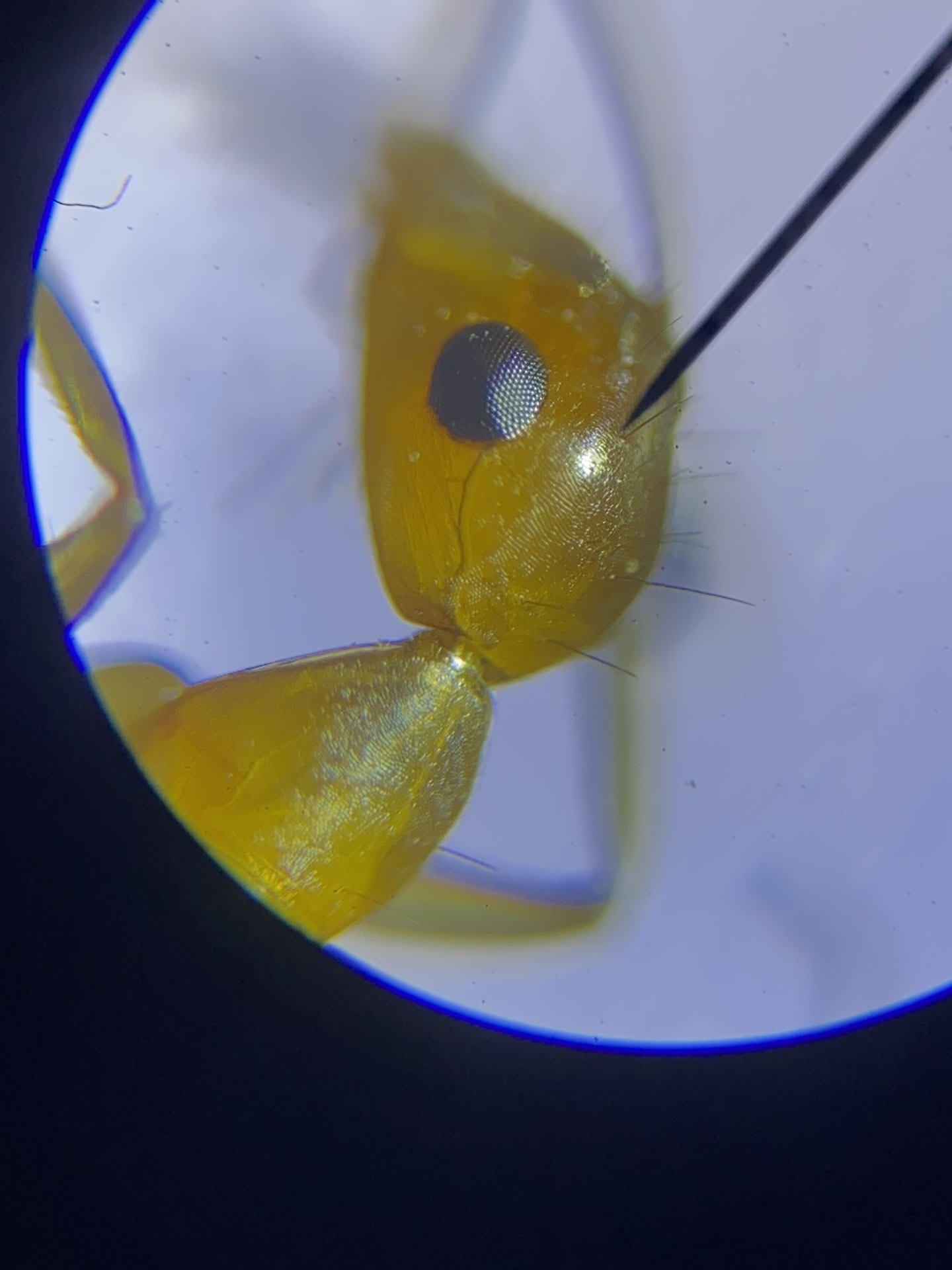
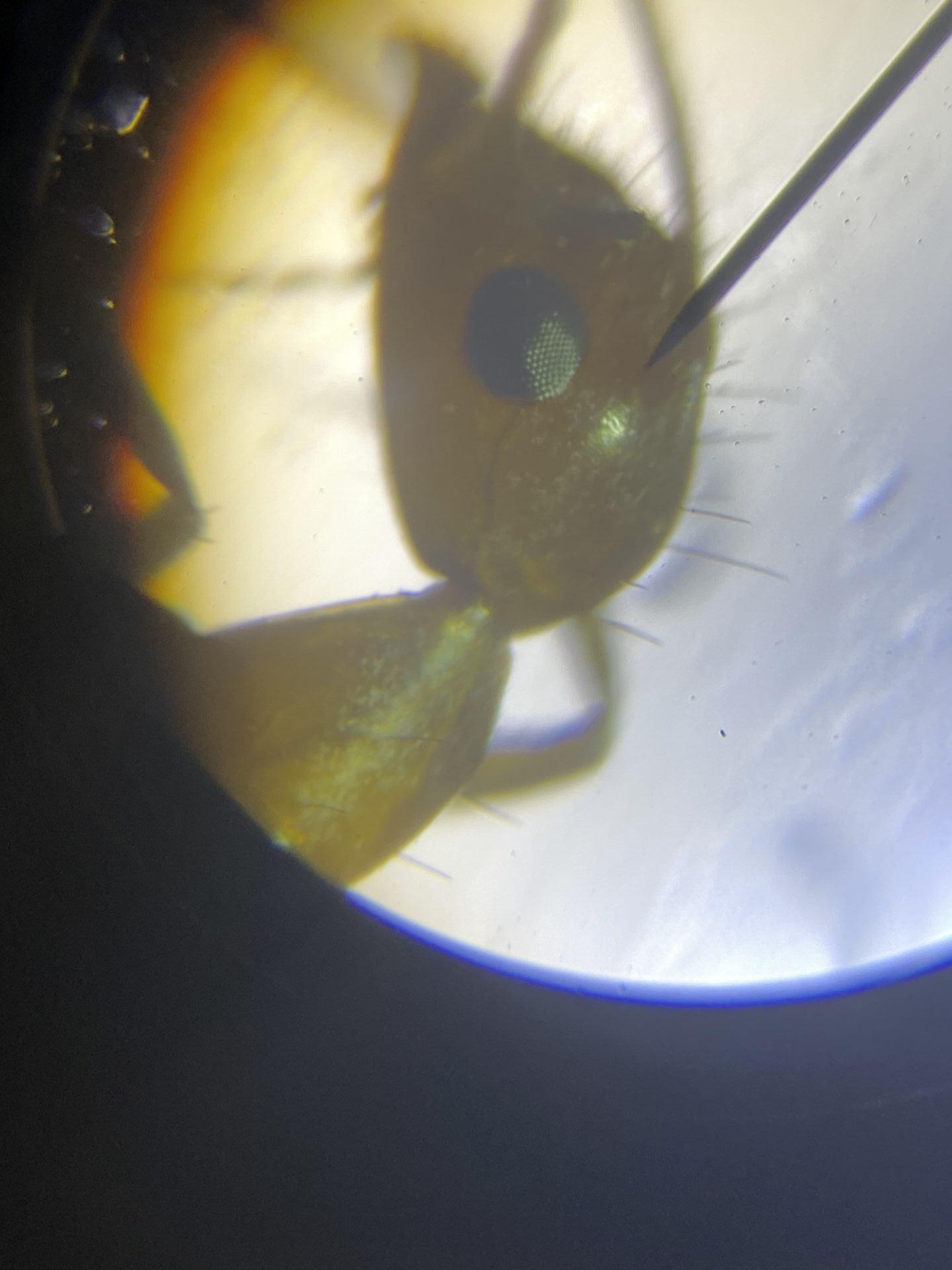
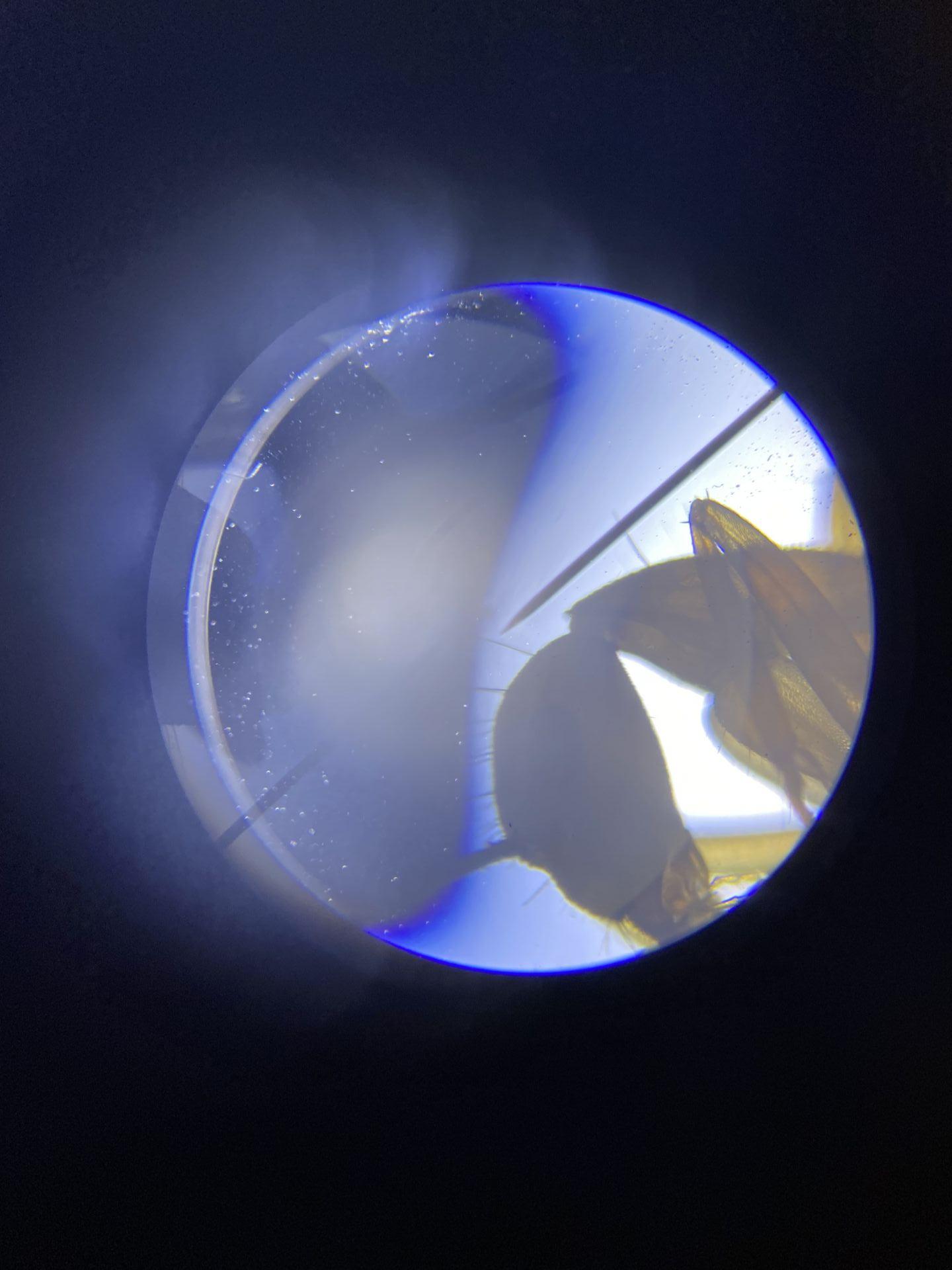
Edited by M_Ants, August 15 2020 - 8:19 AM.
Veromessor pergandei
Veromessor andrei
Crematogaster sp.
Pogonomyrmex cf cali and rugosus
Various Pheidole
C. yogi
:>
How would I do that without killing her?
Veromessor pergandei
Veromessor andrei
Crematogaster sp.
Pogonomyrmex cf cali and rugosus
Various Pheidole
C. yogi
:>
I think I got a pic...
Also I think she has a mite on her. Is it bad?
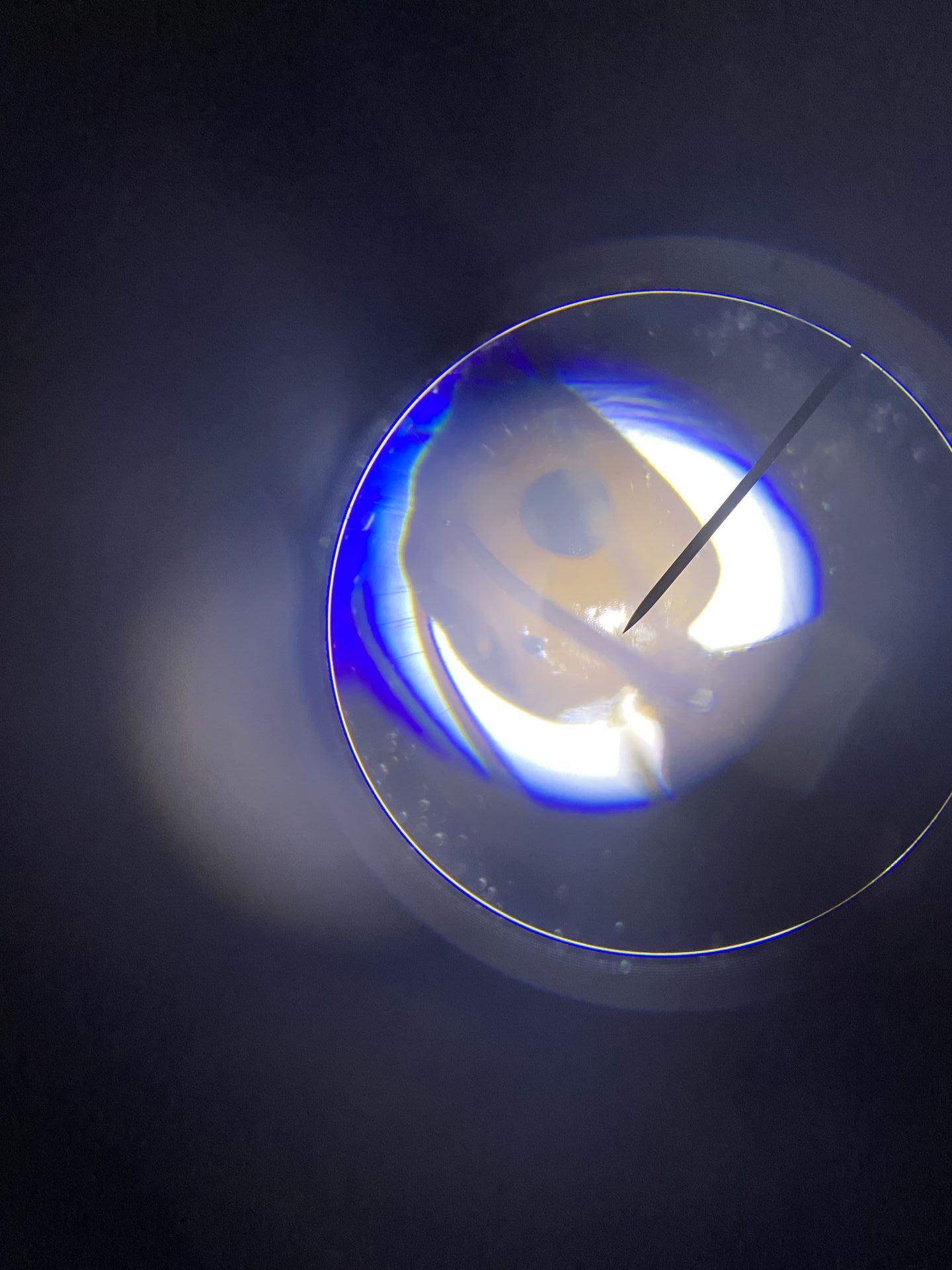
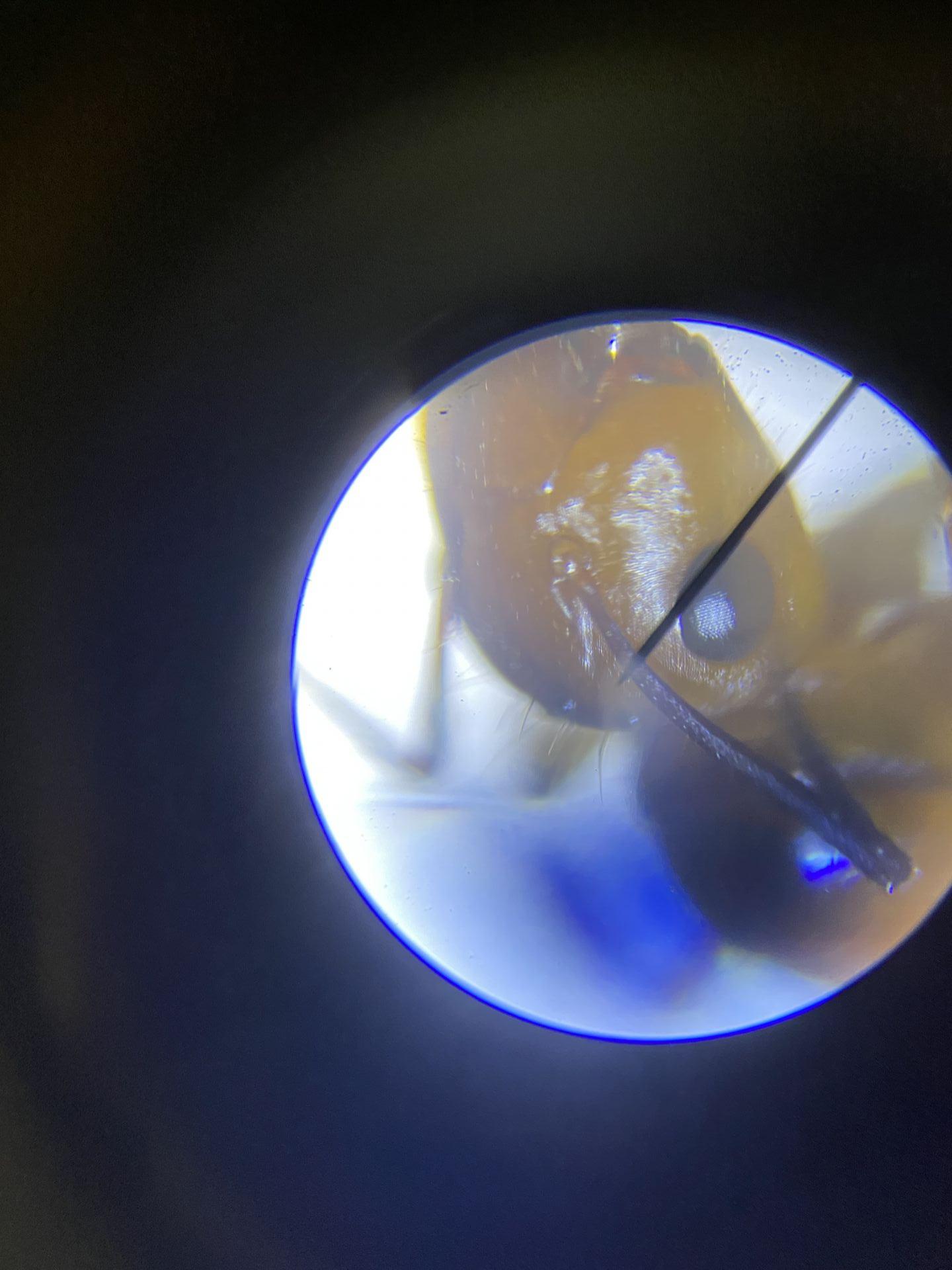
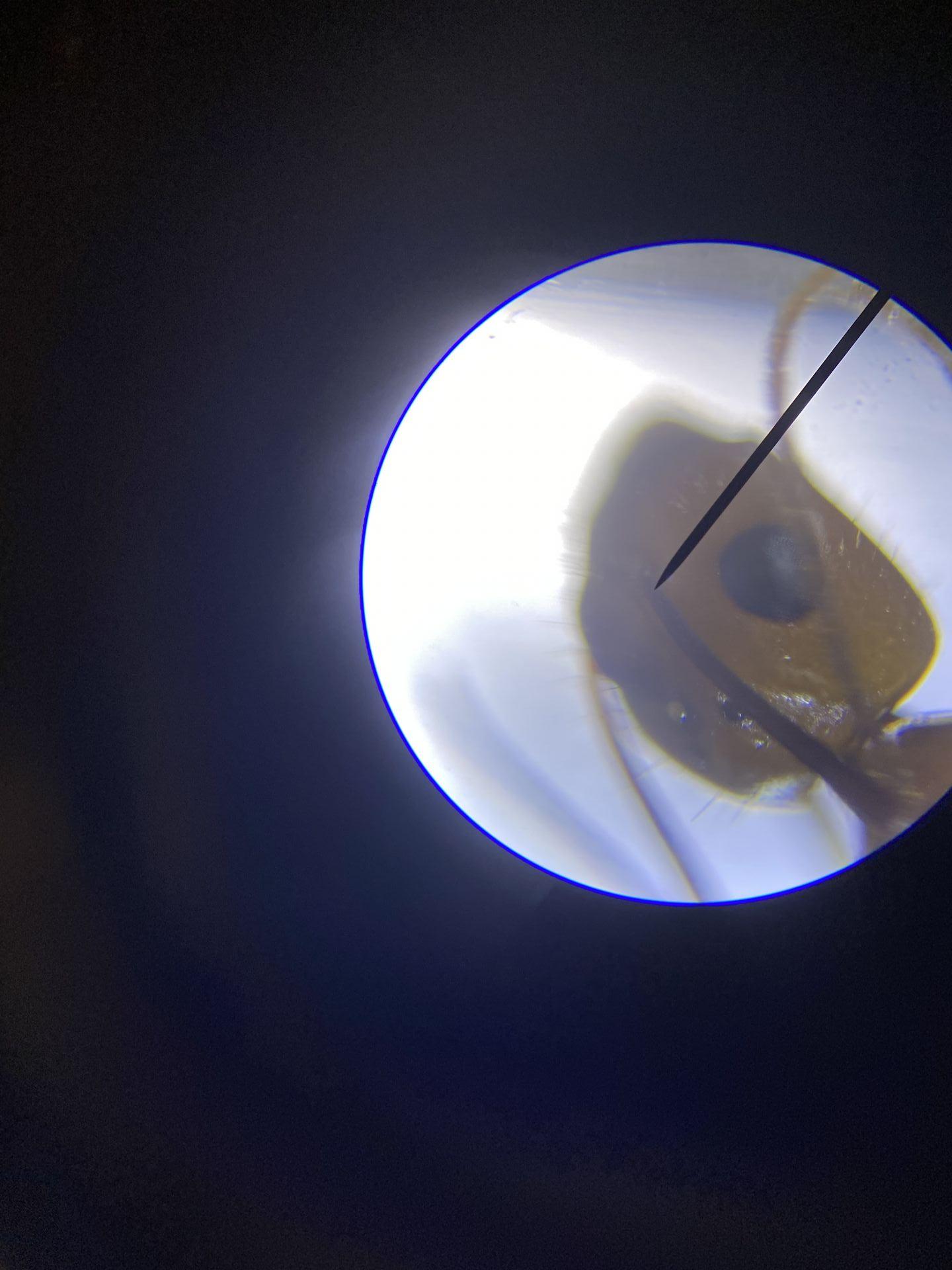
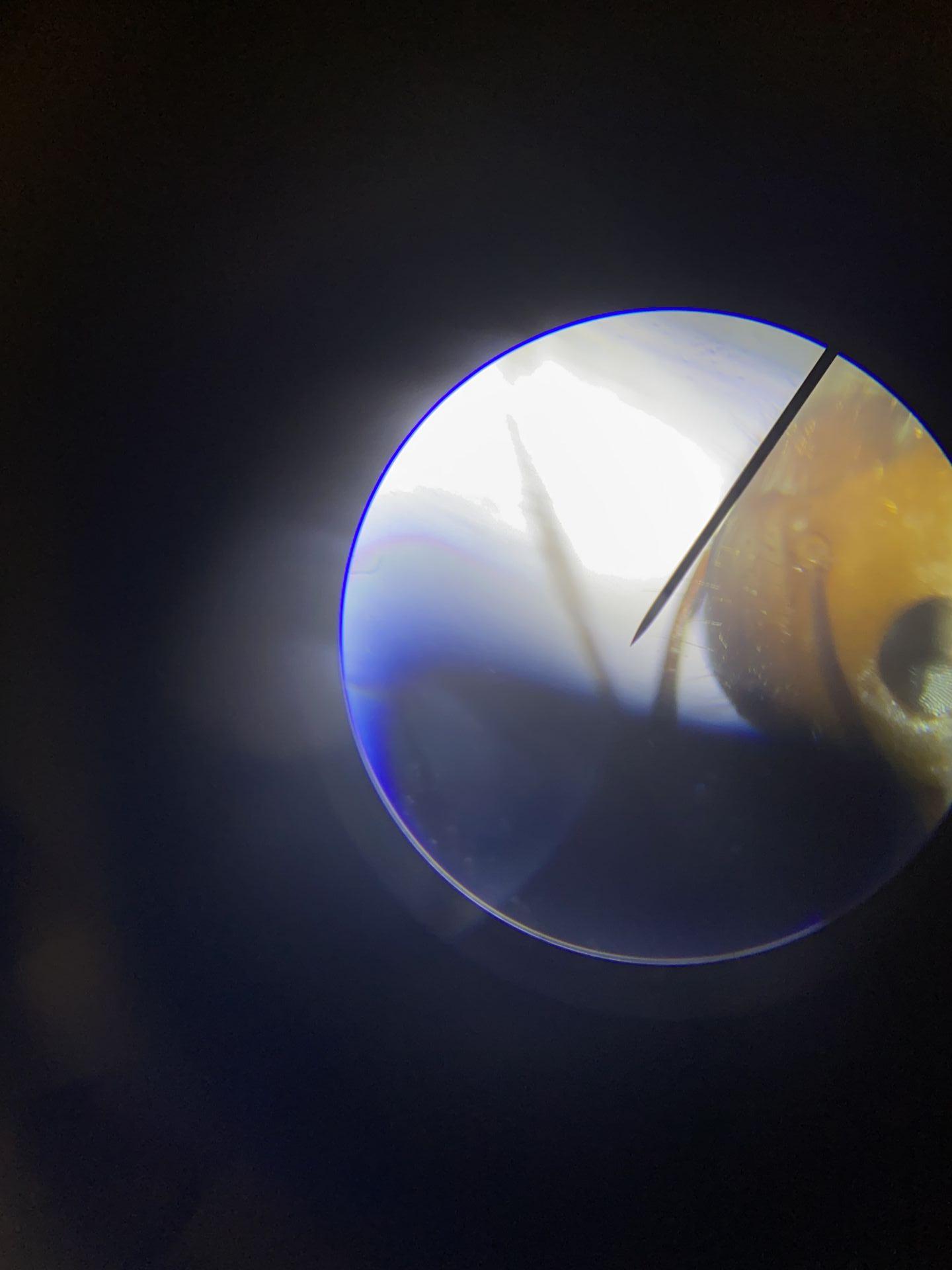
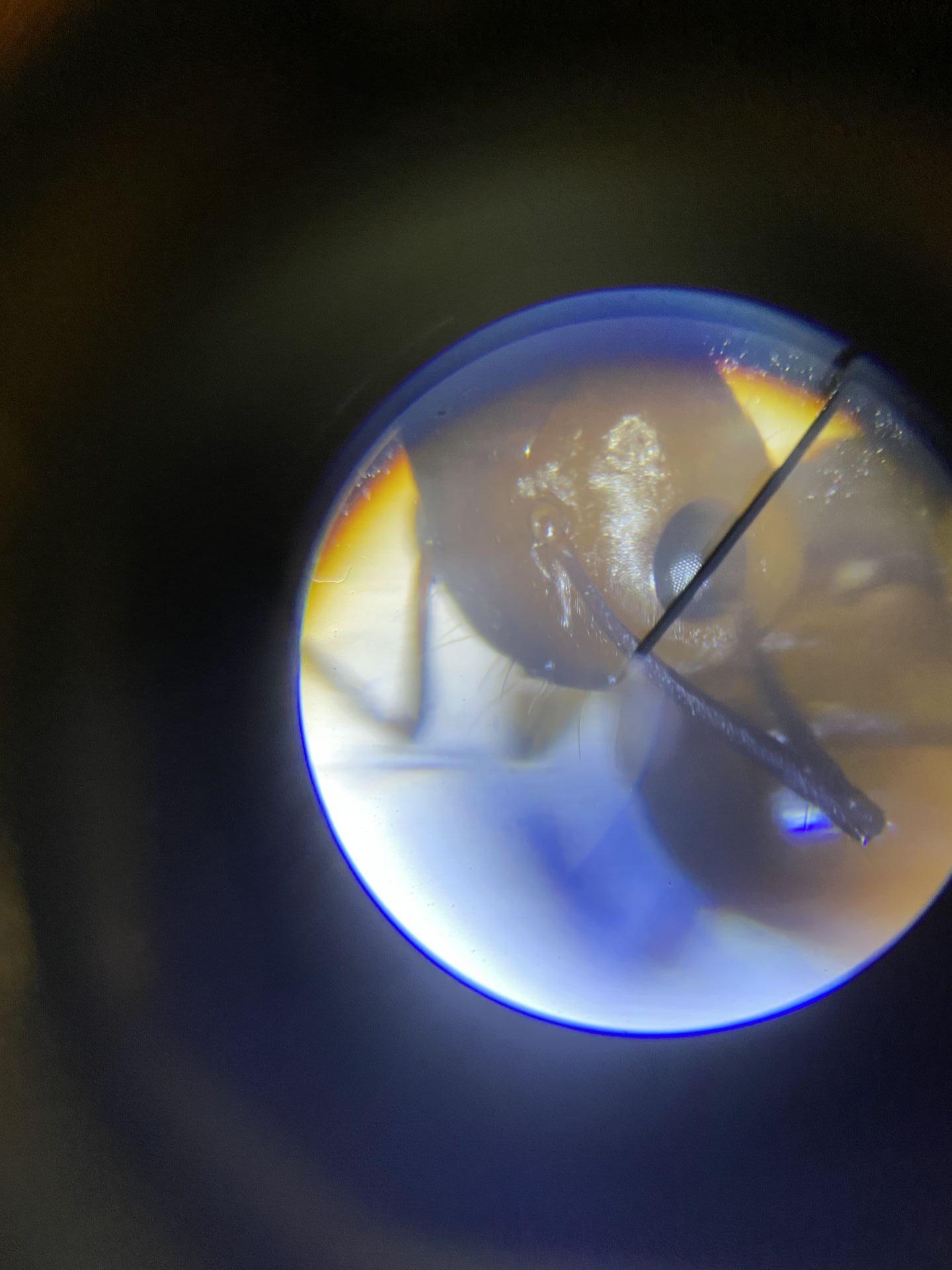
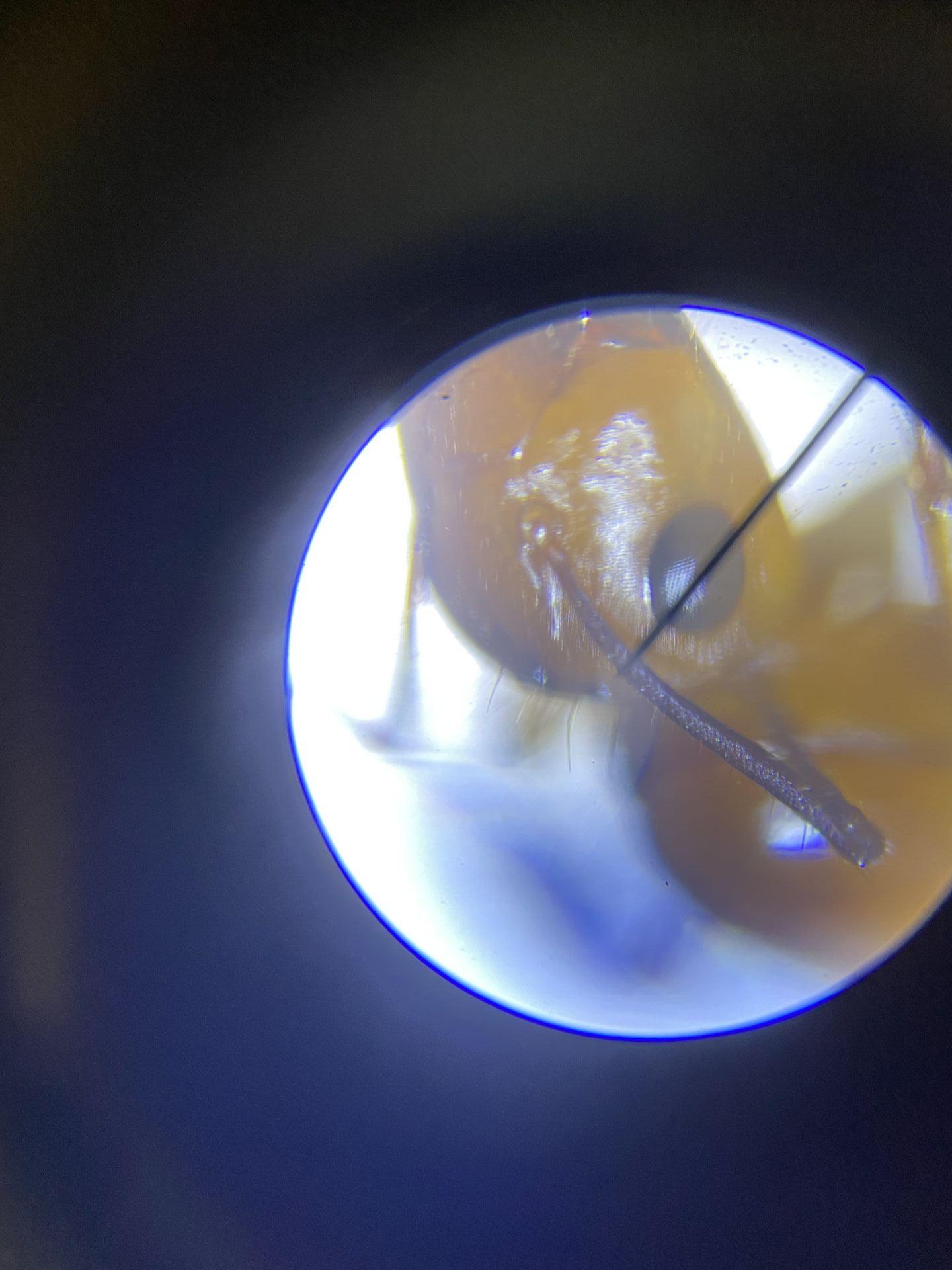
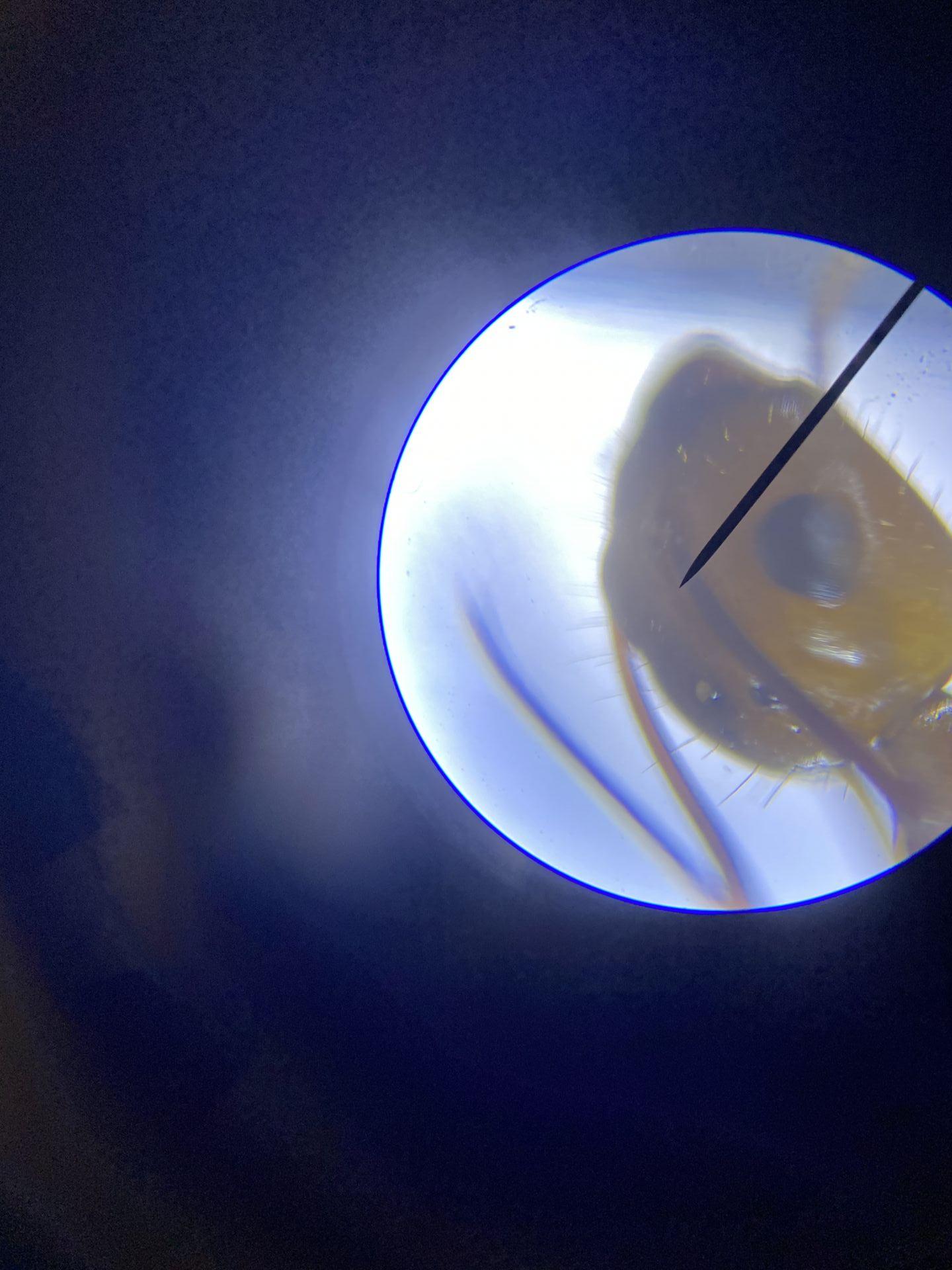
Edited by M_Ants, August 15 2020 - 10:08 AM.
Veromessor pergandei
Veromessor andrei
Crematogaster sp.
Pogonomyrmex cf cali and rugosus
Various Pheidole
C. yogi
You can see the mite in the second pic.
Veromessor pergandei
Veromessor andrei
Crematogaster sp.
Pogonomyrmex cf cali and rugosus
Various Pheidole
C. yogi
Those are ocelli not mites. They're secondary eyes for the ants. I assume they help the queens for flight. I wouldn't ID by the queen, since I'm not sure if the gynes are on the ID key. The best way to ID is to wait for minor workers.
Website: https://sites.google...home?authuser=0
Instagram: https://www.instagra.../bay.area.ants/
Youtube Channel: https://www.youtube....5Mh2eBAviuO2uw?
I think their is a mite on the ocelli.
Veromessor pergandei
Veromessor andrei
Crematogaster sp.
Pogonomyrmex cf cali and rugosus
Various Pheidole
C. yogi
If these are indeed the same species, the workers are C. fragilis due to the hairs shown between the antennae. Absquatulator have no such hairs between the antennae, thus making that the sole difference between C. fragilis and C. absquatulator. Now, if you could get the same angle of pictures with your queen, we could ID her for sure.
Both C. fragilis and C. absquatulator have hair between their antennae/eyes. The difference is that sometimes fragilis has short, often flat setae between the antennae/eyes, while absquatulator does not.
That being said, the photos taken don't show the region of the face we need to see in order to differentiate the two using the "hair between antennae" strategy. One specimen on the fragilis antweb page doesn't show these small setae, so we cannot even be sure that it's a way to differentiate.
If anyone can explain why I could be wrong or how to tell the two apart using hair between antennae, please do.
The C. fragilis antwiki says that fragilis is discerned from absquatulator by: "...erect setae present along entire head margin; minor workers with at least a few setae along head margins".
This is what I have used to identify specimens of fragilis from absquatulator, and from what I've seen it's the only viable way to do so. C. absquatulator also tends to have longer hair on its face from profile view (which matches with this specimen).
I cannot see hair along the sides of the head, which would indicate absquatulator, but the photos are also taken at an awkward angle for seeing these hairs. I would encourage the original poster of this thread to take a straight on head view photo of specimens.
Edited by AnthonyP163, August 15 2020 - 1:33 PM.
Ant Keeping & Ethology Discord - 2000+ Members and growing
Statesideants.com - order live ants legally in the US
If these are indeed the same species, the workers are C. fragilis due to the hairs shown between the antennae. Absquatulator have no such hairs between the antennae, thus making that the sole difference between C. fragilis and C. absquatulator. Now, if you could get the same angle of pictures with your queen, we could ID her for sure.
Both C. fragilis and C. absquatulator have hair between their antennae/eyes. The difference is that sometimes fragilis has short, often flat setae between the antennae/eyes, while absquatulator does not.
That being said, the photos taken don't show the region of the face we need to see in order to differentiate the two using the "hair between antennae" strategy. One specimen on the fragilis antweb page doesn't show these small setae, so we cannot even be sure that it's a way to differentiate.
If anyone can explain why I could be wrong or how to tell the two apart using hair between antennae, please do.
The C. fragilis antwiki says that fragilis is discerned from absquatulator by: "...erect setae present along entire head margin; minor workers with at least a few setae along head margins".
This is what I have used to identify specimens of fragilis from absquatulator, and from what I've seen it's the only viable way to do so. C. absquatulator also tends to have longer hair on its face from profile view (which matches with this specimen).
I cannot see hair along the sides of the head, which would indicate absquatulator, but the photos are also taken at an awkward angle for seeing these hairs. I would encourage the original poster of this thread to take a straight on head view photo of specimens.
Kind of tricky with a live queen but I'll try...I can definitely get a better one of the worker though.
Veromessor pergandei
Veromessor andrei
Crematogaster sp.
Pogonomyrmex cf cali and rugosus
Various Pheidole
C. yogi
0 members, 0 guests, 0 anonymous users